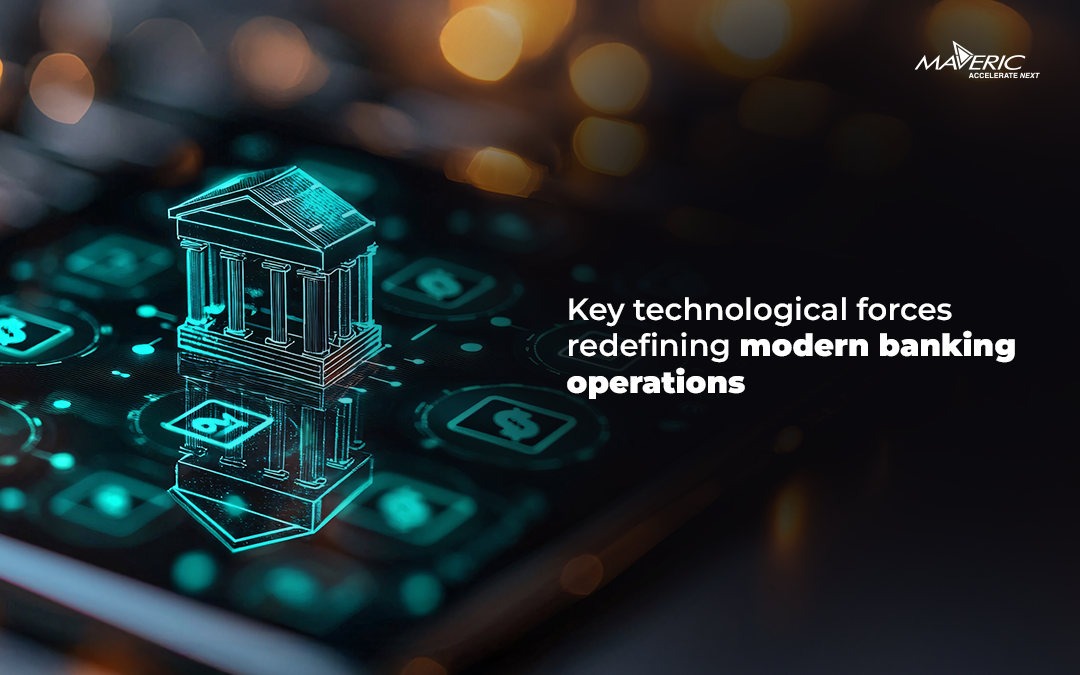After the pandemic, banks must speed up their digital transitions. Banks, however, will need to revise their front- and back-office business models to keep up with the changes and head off any potential upheavals that may lie ahead. True digital banking and a complete transformation depend on cutting-edge technologies like blockchain, cloud computing, and the Internet of Things.
The customer obsession will continue.
The customer is the focal point of any effective transformation plan. Financial organizations need to optimize their big data to automate business processes and cut expenses as a result of interest rates close to 0%, banking fees reducing drastically, and rising customer expectations. Banks can speed up the creation of omnichannel products, services, and functionality by upgrading their applications using AI, the cloud, and automation. Because of this, the user experience is enhanced, and trust and loyalty are strengthened. Maveric Systems can guide you through a successful digital transformation.
What is banking digital transformation all about?
The term “digital transformation” refers to modernizing a bank’s infrastructure and procedures to serve customers in the digital era better. The use of digital channels for communication with customers, automation of routine tasks, and analytics for gaining a deeper understanding of customer behavior are all examples.

Advantages of Banking Digital Transformation
The modern banking customer can reap many benefits from switching to digital banking.
1. You can use the bank whenever you want: The ability to access your bank account whenever you like is a significant perk of digital banking. The ability to make deposits, see account statements, modify account information, and conduct other financial transactions is available 24/7, not just during regular business hours.
2. More affordable interest rates and charges: Maintenance and transaction fees are typical methods by which banks recoup costs associated with personnel, infrastructure, etc. The convenience of online banking has led to a decline in the need for full-time bank staff and a proliferation of physical bank locations. In light of these reduced costs, banks fully embracing the digital revolution are better positioned to provide their consumers with better rates and fees.
3. Upgraded satisfaction levels among paying customers: Digital-first banks consistently outperform traditional banks in several metrics important to clients, such as ease of use, speed of transactions, and satisfaction with the banking experience. When opposed to using a brick-and-mortar bank, banking digitally is much simpler. Using a digital bank, for instance, only takes a few minutes on a mobile device or computer.
4. Invoice processing systems: Automating your payments is a breeze with digital banks. You can automate the withdrawal of money from your account every month to pay for your regular expenses, eliminating the need to remember to pay them on time each month and risking late payment fees and penalties. You can also streamline your cash flow management by automating vendor payments using a net-30 account.
Disadvantages of Digital Banking Systems
The benefits of digital transformation in banking, such as increased efficiency and streamlined processes, are not without drawbacks.
1. Fears about Safety: Online banking may be more convenient but poses security hazards. There are security gaps that bad actors can use to steal your money, thanks to the internet features that let you access your account and transact remotely. These days, online banking faces numerous cybersecurity threats. In the case of internet banking, for instance, hackers could gain unauthorized access and obtain highly personal information. Malware and ransomware assaults, spoofing, credential harvesting, identity theft, fraud, etc., are some more concerns.
2. Problems with technology may arise. There is some doubt over the dependability of the electronic systems on which online banking relies. Even if the odds of being affected by a technological glitch are low, being unable to access your funds when you need them most can be a significant inconvenience. For instance, if a server outage at your online bank, you could be locked out of your account.
Conclusion
Companies and service providers must increasingly digitize their processes to keep up with the times in a more digital environment. This is especially important in the financial sector, where more and more customers are doing business via mobile devices and the Internet. As a result, financial institutions are racing to implement digital transformation strategies to help them compete and thrive in the modern digital environment.
About Maveric Systems
Starting in 2000, Maveric Systems is a niche, domain-led Banking Tech specialist partnering with global banks to solve business challenges through emerging technology. 3000+ tech experts use proven frameworks to empower our customers to navigate a rapidly changing environment, enabling sharper definitions of their goals and measures to achieve them.
Across retail, corporate & wealth management, Maveric accelerates digital transformation through native banking domain expertise, a customer-intimacy-led delivery model, and a vibrant leadership supported by a culture of ownership.
With centers of excellence for Data, Digital, Core Banking, and Quality Engineering, Maveric teams work in 15 countries with regional delivery capabilities in Bangalore, Chennai, Dubai, London, Poland, Riyadh, and Singapore.











